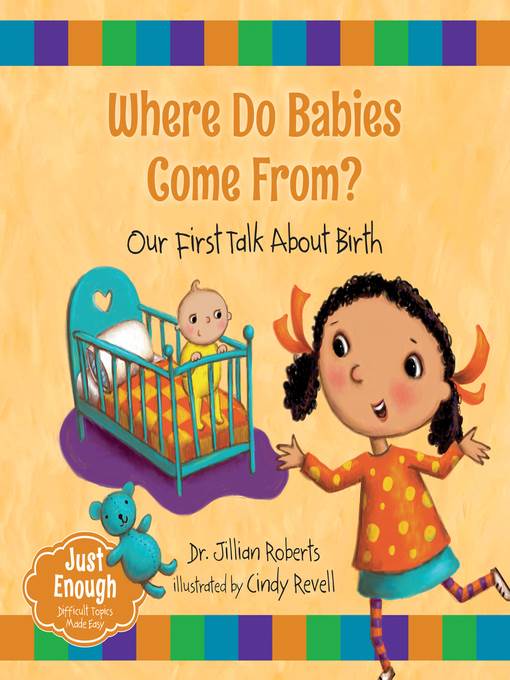
Where Do Babies Come From?
Our First Talk About Birth
فرمت کتاب
ebook
تاریخ انتشار
2015
Lexile Score
520
Reading Level
1-3
نویسنده
Cindy Revellناشر
Orca Book Publishersشابک
9781459809437
کتاب های مرتبط
- اطلاعات
- نقد و بررسی
- دیدگاه کاربران
نقد و بررسی

October 1, 2015
PreS-Gr 1-Based on Roberts's app, The Facts of Life, this picture book tackles the basics of reproduction. The text is presented in a question-and-answer format that will satisfy young children's curiosity and that could provide a framework or a script for caregivers to work from. The art is colorful, gentle, and detailed, though it may occasionally be confusing to readers. For example, the question "How long does it take to grow a baby?" is followed by an illustration depicting fruits of increasing size, representing the size the baby during each month of development. Revell includes characters of various ethnicities and represents different kinds of families. There is a single page in the back addressing other questions that kids may have; these take on same-sex families, adopted babies, and specifics about conception. VERDICT A fine, age-appropriate option for exploring reproduction and pregnancy.-Maggi Idzikowski, Ann Arbor Public Schools, MI
Copyright 2015 School Library Journal, LLC Used with permission.

August 15, 2015
A child psychologist offers simple answers to a perennial question. Opening with the statement "Nature has given every living thing a way to make a baby," the author goes on to explain that babies come from a mother's body, from her womb, "just below the stomach." The combination of a sperm and an egg from a father and mother, whose "bodies fit together," creates the seed that will become a baby. Going on to discuss a baby's nourishment via the umbilical cord, she makes a nice connection, pointing out that the child reader has a belly button, too. When the baby is ready to be born, it exits via the mother's birth canal, at home or in a hospital. Colorful cartoonlike digital illustrations link human children and the wide world of growing things in a variety of scenes including a growth chart measured by fruits and vegetables. These illustrations show families of different ethnicities; in one case two women carry a baby from a hospital. The backmatter-questions and answers in a smaller font without illustration-addresses more-complicated issues, using words like penis, vagina, in vitro fertilization, conception, fertility, Cesarean section as well as mentioning adoption and nontraditional families. Far less detailed than most such explanations, this title in the Just Enough series for the very young is best as a conversation starter. (Informational picture book. 2-6)
COPYRIGHT(2015) Kirkus Reviews, ALL RIGHTS RESERVED.

November 15, 2015
Preschool-G There are plenty of picture books out there that talk about babies and how cute or noisy they can be. Many selections, especially for soon-to-be-siblings, mention things like Mummy's tummy getting bigger or upcoming changes in family dynamics. But let an inquisitive child ask about where these babies actually come from, and reading material dwindles. This no-nonsense guide is here to save the day with straightforward, age-appropriate information on the basics of conception and pregnancy. The author, a child psychologist, effectively uses a question-and-answer format to anticipate queries, and she responds in brief but thorough explanations. Technical vocabulary (womb, umbilical cord) is defined in context, and cheerful, expressive illustrations align closely with the text, reinforcing concepts. A last page addendum addresses very specific topics, such as in vitro fertilization, Cesarean sections, and same-sex unions. Some baby-themed selections concentrate on fears and feelings; this factual presentation, with its positive, accessible information, should be just as reassuring to expectant siblings.(Reprinted with permission of Booklist, copyright 2015, American Library Association.)

























دیدگاه کاربران